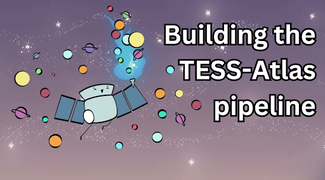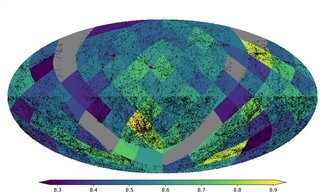
As part of ADACS Merit Allocation Program (MAP), we partnered with Dr Ryosuke Hirai to extend the HORMONE hydrodynamics code with a new MPI-parallel solver for elliptic partial differential equations. This work enables HORMONE to perform large-scale, multi-node radiation hydrodynamics simulations, crucial for understanding complex astrophysical phenomena such as stellar mergers. “I recently added radiation transport capability to the code,” said Dr Hirai, “but it was only written to run on single nodes. This project enabled the code to run radiation hydrodynamics simulations on multiple nodes in parallel, allowing me to carry out larger-scale, higher-resolution simulations over longer timescales.”
The new PETSc-based solver integrates with HORMONE’s existing code structure and supports MPI scaling on multiple compute nodes. In addition to implementing the solver, the team identified and fixed numerous legacy code issues along the way. “There were a lot of code bugs that the team identified and fixed in the process,” Dr Hirai noted. He also highlighted the long-term benefits of previous support, saying, “The CI/CD framework that was set up by the ADACS team in the previous project has completely transformed how I code and has proved very helpful in avoiding code regression.”
Looking ahead, Dr Hirai plans to use the upgraded code to simulate the long-term evolution of stellar merger products in full 3D radiation hydrodynamics, moving beyond previous 1D models. “With the updated HORMONE, I will simulate the evolution of these distorted stars in 3D… to understand how they eventually redistribute their angular momentum,” he explained. “The results will be used to predict how much mass will be ejected equatorially, which can be tested directly with observations of the Triple Ring Nebula of SN1987A."
Reflecting on the collaborative process, he added: “I will highly recommend the ADACS MAP to any astrophysicist requiring software support. The ADACS team has deep knowledge both in computing and astrophysics, enabling very smooth communication. They can quickly understand the problem and make optimal decisions tailored for astrophysics applications."

Check out some of our other projects.

ADACS improved TESS-Atlas by optimising scalability, reducing website construction time, and automating workflows with a custom Job Controller for handling new exoplanet candidates efficiently.

A monumental translation task to modernise an existing code base and make it available and accessible to all.

A compact but enabling piece of computational infrastructure that allows astronomers to move from sampling tens of parameters to hundreds or thousands, thereby scaling Bayesian hierarchical analysis to the era of precision cosmology.